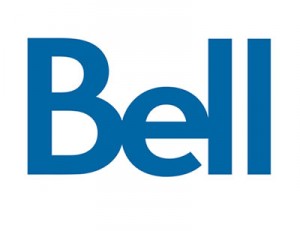
 Unless Canada deregulates the media industry further, a “technological storm” by “audiovisual Wal-Marts” will harm or destroy Canada’s media companies. No doubt looking directly at Netflix, those were the views of Quebecor CEO Pierre Karl Peladeau at the outset of hearings held this week by the Canadian Radio-television and Telecommunications Commission on media ownership and vertical integration issues.
Unless Canada deregulates the media industry further, a “technological storm” by “audiovisual Wal-Marts” will harm or destroy Canada’s media companies. No doubt looking directly at Netflix, those were the views of Quebecor CEO Pierre Karl Peladeau at the outset of hearings held this week by the Canadian Radio-television and Telecommunications Commission on media ownership and vertical integration issues.
Canada’s media landscape is rapidly consolidating at a rate that will allow even ordinary Canadians with a passing interest in the issue to recognize the handful of remaining media moguls and identify them by name. Phone companies that own major Canadian television networks, cable operators that own cell phone companies, and mergers among the dwindling pack have left consumers soaking in Shaw, Rogers, Bell, and Quebecor — whether they flip on their televisions, make a cell phone call, read a newspaper, or download something from the Internet. Talk about vertical integration! Now the supersized are back for more deregulation so they can trade programming rights between themselves, fend off the devil — Netflix, and of course continue to buy each other out.

There is one exception, of course. Allowing party crashers. While all of the incumbent players want the rules loosened up on their respective media and telecommunications operations, they are hellbent on keeping foreign competition out of Canada — the only real deep pockets sufficient to break up a convenient cartel of phone and cable companies. Rogers and Shaw stay on their respective sides of a line dividing eastern Canada’s turf for Rogers and western Canada’s territory for Shaw. Bell and Telus do much the same. Quebecor provides cable for Quebec, and a handful of much smaller players fight for any remaining crumbs.
For Americans, it would be the equivalent of turning over your telephone, broadband, cable, television, newspapers, magazines, and radio stations to Rupert Murdoch or ex-media baron Ted Turner.
For Canadians, these hearings come just a tad too late. Shaw Communications is absorbing their latest buyout — Canwest Media’s TV assets, which are hardly meager. Shaw will run more than two dozen local broadcast TV outlets, 30 cable and satellite networks, and Global — a major broadcast network. Bell is still popping Rolaids over its digestion of the enormous CTV and smaller upstart A-Channel network. When it’s finished, “A” will become “CTV Two.”
 The Globe and Mail notes between them, Bell, Shaw, Rogers and Quebecor control:
The Globe and Mail notes between them, Bell, Shaw, Rogers and Quebecor control:
-
86 per cent of cable and satellite distribution;
-
70 per cent of wireless revenues;
-
63 per cent of the wired telephone market;
-
49 per cent of Internet Service Provider revenues;
-

42 per cent of radio;
-
40 per cent of the television universe;
-
19 per cent of the newspaper and magazine markets;
-
60 per cent of total revenues from all of the above media sectors combined.
As far as growth goes, as Alan Keyes used to proclaim, “that’s geometric!”
But it’s still not enough now that Netflix has arrived in Canada. Despite the fact the operation has been challenged by punitive usage caps restricting viewing (or lowering its video quality), Netflix and new technology companies like it are the 21st century boogeymen for these multi-billion dollar media corporations. The only way to defend against it? Deregulate to allow them to trade viewing rights, grow larger, and charge whatever they like. Somehow that seems to miss the point: Netflix is popular because it costs less, allows people to stream the shows they actually want to watch at a time of their choosing, and let’s families drop some overpriced premium channels and video rental fees along the way.
Bell’s dollar-a-holler researcher expanded on why large media conglomerates miss the point, even if he did so unintentionally.
According to University of Alberta economics professor, Jeffrey Church, “vertical integration is beneficial for consumers.” Sit down as you read why:
-
it reflects efficiencies, spurs competitive innovation and is a global trend;
-
telecom, media and Internet markets in Canada are “highly competitive;”
-
our ‘small media economy’ needs a few deep-pocketed national champions to compete globally and invest heavily in innovation at home;
-
instances of harm are mostly imaginary and few and far between;
-
it helps keep “consumers . . . within the regulated system” (
Shaw’s submission, p. 4).
Like cattle.
 Canada’s cable consolidation march continued Monday with Calgary-based Shaw Communication’s announcement it was acquiring several small British Columbia cable systems for an undisclosed amount.
Canada’s cable consolidation march continued Monday with Calgary-based Shaw Communication’s announcement it was acquiring several small British Columbia cable systems for an undisclosed amount.

 Subscribe
Subscribe





